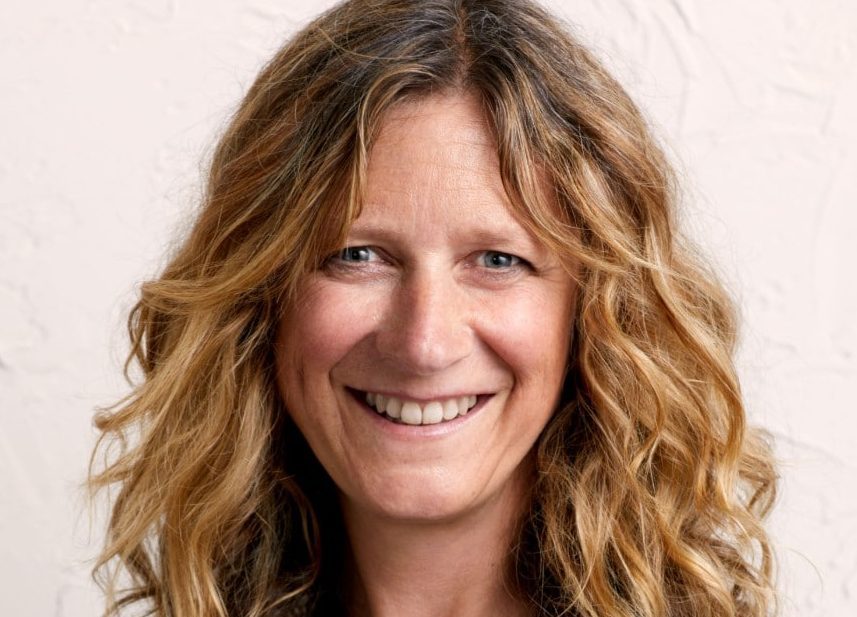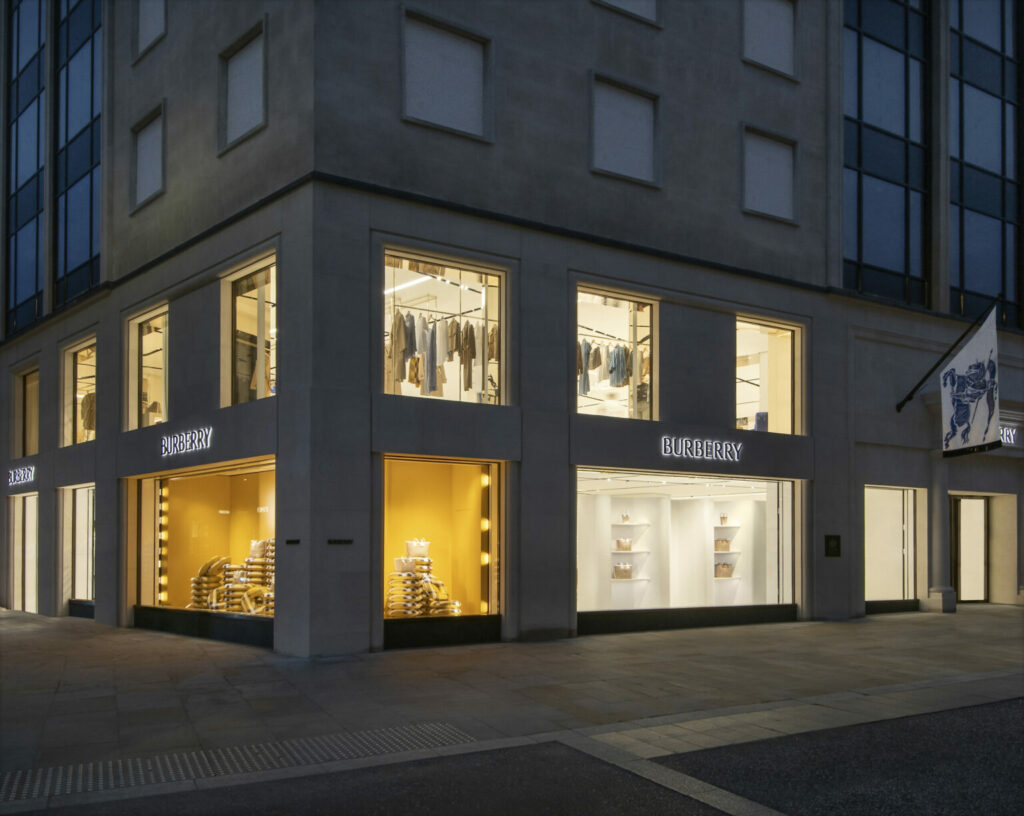Seasalt was founded by Don Chadwick in 1981, selling functional clothing to fishermen, farmers & artists.
However, since Chadwick died in 2001, the fashion retailer has been managed by his sons Leigh, David and Neil.
With the history of Seasalt in mind, chief creative officer Laura Watson said the retailer has “subsequently evolved” – much like her own career.
When Watson left graduated with degree in textile design from Manchester Metropolitan University, she knew she wanted a career in fashion. She bagged the role of knitwear designer at knitwear brand Nicole Farhi, where she worked for the next two years and described it as a “fantastic” time.
Watson was inspired by Farhi to set up her own label, and in 1998, Saltwater was born.
READ MORE:
“I built up my own fashion brand over about 10 years,” Watson recalled.
“We got orders with Whistles, MatchesFashion and Browns, and that led to orders from overseas accounts.”
Having her own business was “really useful groundwork” before her move to Seasalt.
Despite trading well and having a shop set up on Marylebone Lane, as well as a catalogue and online business, Saltwater was eventually sold in 2010 by Watson’s investor. But when she noticed that they “started to get a little bit of investor fatigue”, things changed.
“He sold it to another organisation, and actually, they wanted to take it in a different direction,” Watson told Retail Gazette.
That’s when she begun her search elsewhere.
She met Seasalt boss Neil Chadwick and print designer Sophie Chadwick – a husband and wife team – at the 2010 Pure exhibition, where she was led to joining the retailer as creative director.

Despite the change in career, Watson still looks back on her time at Saltwater with fond memories.
“Saltwater was like my middle child. I have no regrets. It was absolutely the right thing to do at the time,” Watson told Retail Gazette.
“That sense of it being mine still stays with me.”
She said she inspired by the Chadwicks to join Seasalt because she “really admired their whole ethos”.
“I really liked what they stood for in terms of that link with the sustainable soil associated cotton,” Watson said.
“A lot of their product was great, some were really great products that I could help develop.
“It was a great time to come in and be able to shape it and make it much more versatile. There’s just a real purpose, and that made it easy to join.”
After eight years as creative director at Seasalt, in 2018 Watson was promoted to chief creative officer. And in that time span, the retailer had scaled up dramatically.
“When I joined, we had 11 stores and now we have 65,” she recalled.

“I think turnover was just under £10 million, and now it’s north of £60 million.
“In the beginning it was just me, whereas now we have a team of over 20 just on design.
“The team are very creative individuals, we’ve got illustrators, photographers, writers, designers and textile designers.
“We’re harnessing that and putting that sort of front and centre to the customer.”
One of Watson’s responsibilities includes putting together Seasalt’s creative direction for a season.
“The current theme is around the arts and crafts movement and how certain individuals from that movement were linked to Cornwall,” she said.
“We have something called the Modern Creatives project where we work closely with a contemporary artist or designer from Cornwall – a pioneer of their area – and feature them.
“People usually associate Cornwall with buckets of spades, seagulls, beach huts, and that’s not what we’re about.”
Despite this, Seasalt continues to present Cornwall as part of its brand identity.
“Most people have fond memories of time spent there and a wish to return, so it’s an immediate positive with customers,” Watson explained.
“Just because we’re in Cornwall, we’re not out of touch with what’s happening elsewhere in the market. But it’s always about bringing it back to what we’re about.
“We recently visited 70 online customers in their homes to do some surveys and focus groups.
“It’s not about pieces that will be trend lead and therefore go out of style quite quickly, it’s not fast fashion – it’s slow”
“Customers are repeatedly telling us how much they’re loving the colours, prints, fabrics and styling, so about 50 per cent of the collection from each season will be new.”
Watson and her team work 18 months ahead of the season to developing every item from concept through to the final stages.
“We’re very much about thoughtful design. It’s not about pieces that will be trend lead and therefore go out of style quite quickly, it’s not fast fashion – it’s slow,” Watson laughed.
Seasalt has also held a whole host of focus groups in various stores and collated all of the feedback, while its catalogues were something customers “spoke very positively about”.
“They would come into store holding it asking to be shown that particular item,” Watson told Retail Gazette.
She noted that Seasalt’s website has not been neglected in the process of working hard to maintain store appeal.
“We’re seeing younger customers shop more online,” she said.
“We’re trying to make sure that that visual articulation of the brand, the experience is similar as it can be.
“It’s very different being in store because you’re getting service from our stores, but visually, making sure it all ties together is key.
“We have a really strong online customer service team. All of the comment tree that might come in via social or via stores is collated and fed through to the right team so that we can respond and effect change.”
In regards to inclusivity, Seasalt launched a plus extension range in December 2016 thanks to customer demand. Up until then, its sizes were six to 22, and now offers up to a size 28.
“We’re seeing sort of plus 300 per cent growth on the plus range,” Watson said.
Seasalt also launched a petite range in November 2018, as well as a tall range, and now plans to release a maternity line for autumn/winter 2020.
The initiatives didn’t end there as Seasalt added an “easy on” collection, designed for less-abled people who may find dressing difficult for a variety of reasons.
Meanwhile, despite the October 31 deadline for Brexit and the economic uncertainty it is creating, Seasalt still plans on opening 10 to 12 stores annually.
“We know there’s going to be uncertainty for the whole retail industry,” Watson said.
“We are one of Cornwall’s biggest employers. So it’s been significant, and thankfully shows no sign of slowing down”
“We’ve got to have faith that the product, brand, service, and value for money will stand us in very good stead. And we’re not worried.
“We might be looking at bringing certain deliveries in sooner, but we’ve got to be careful because our warehouse can only accommodate so much.
“We don’t want to put the pressure on unnecessarily so you know, no knee jerk reactions and just trying to do what we always do.”
Seasalt’s eyes are also set on international growth.
“We are working for spring/summer 2020 with two new agencies in different regions of the US, which is going really well.
“A lot of focus is being placed on the online strategy for that market. We already sell online to 200 countries.
“We are one of Cornwall’s biggest employers. It’s been significant, and thankfully shows no sign of slowing down.”
Click here to sign up to Retail Gazette‘s free daily email newsletter

















